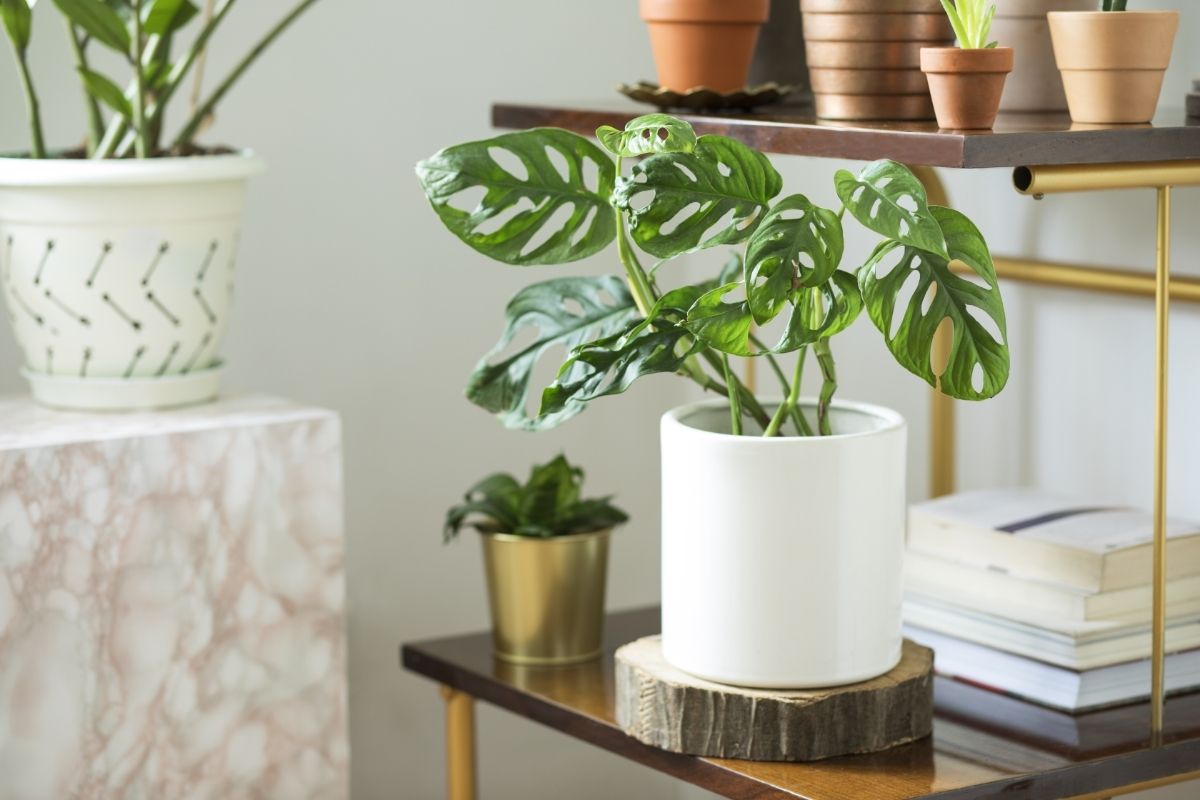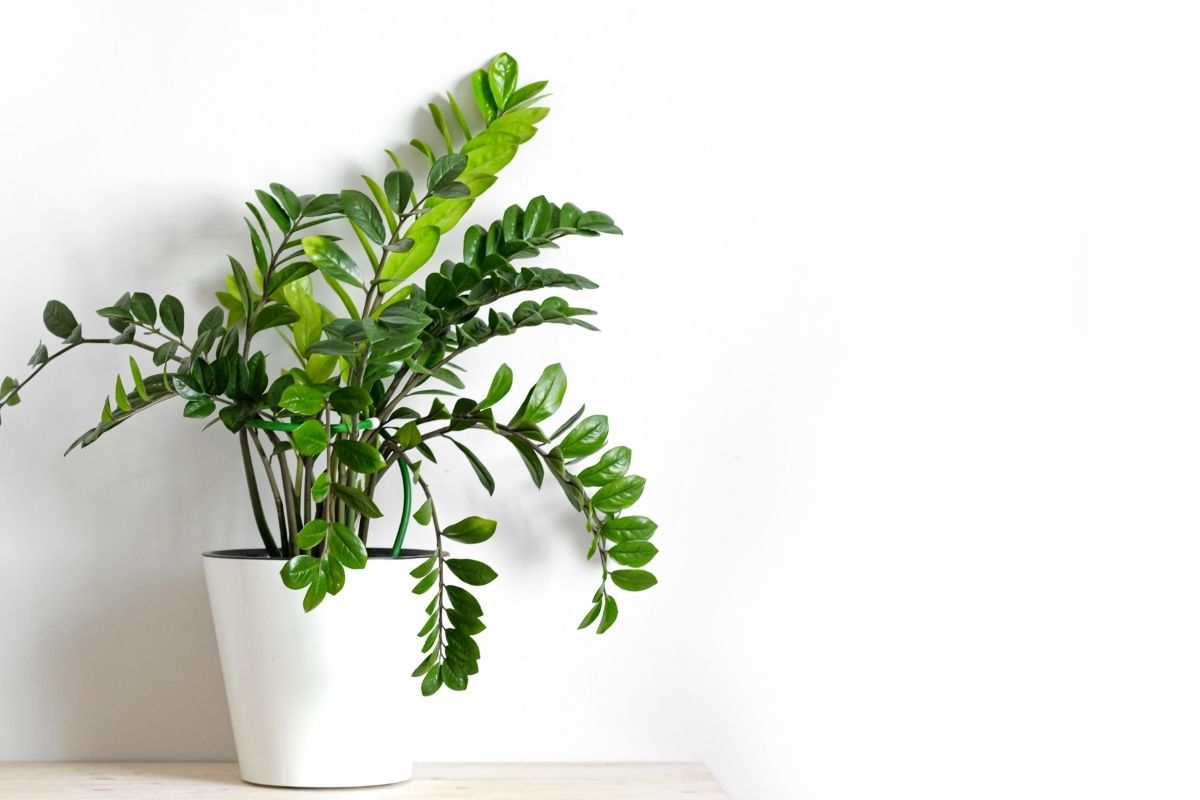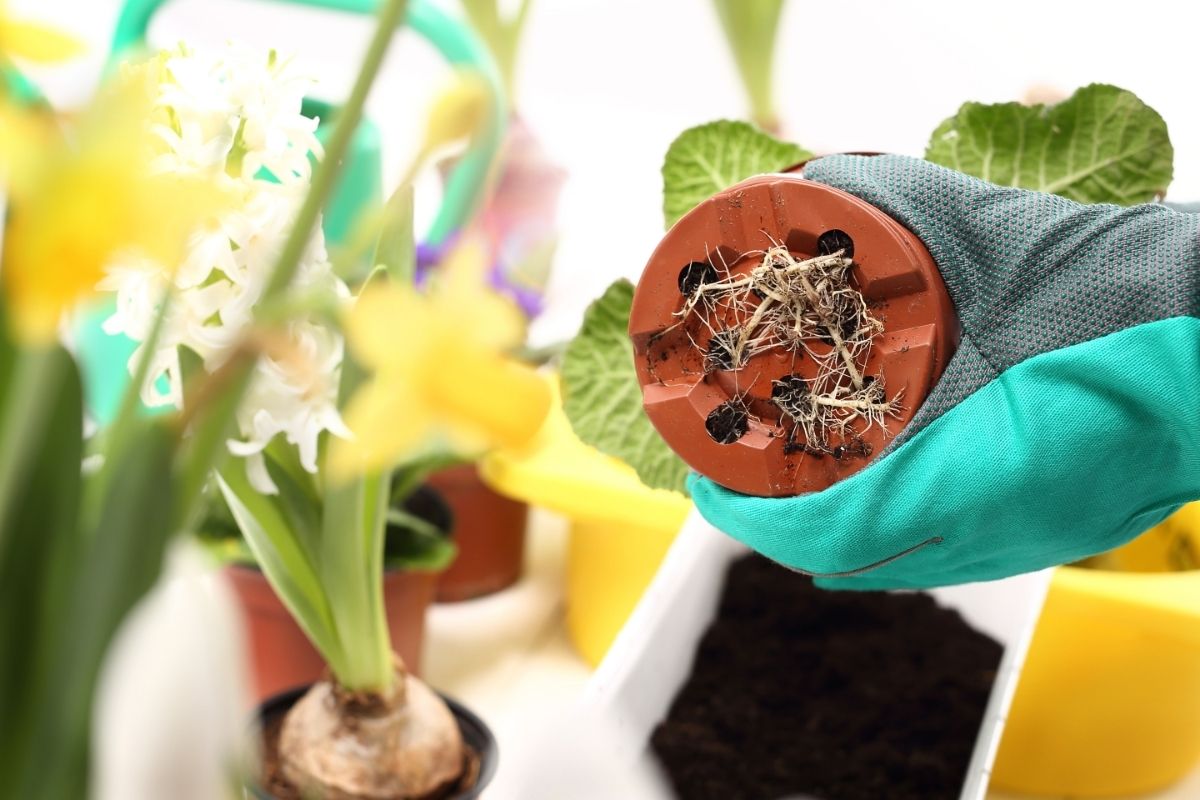Repotting your Monstera plant is the perfect way to refresh your plant – allowing more nutrients in the soil and room for your plant to reach its full potential.

Plus, transplanting your monstera can also ensure that the beautiful foliage is able to grow stronger and larger by ensuring a fresh, large base that is able to draw in all the nutrients it needs.
To maintain the health of your plant, monstera houseplants should be repotted every one or two years.
When it comes to repotting your monstera, ensure that your new pot has drainage holes, regardless of the type of pot. Plus, you’ll also want an organic, airy potting mix.
Once you have gathered all your supplies, the next step is to carefully remove your monstera plant from its existing pot. If there are thick roots circling the bottom, simply loosen these up.
Then, place the monstera roots in the new planter – ensuring the stems are approximately 1 inch from the top of the planter – and then backfill the pot with new soil.
Water thoroughly and then enjoy your monstera plant in all its glory.
With this in mind, this article will walk you through everything you need to know about repotting a monstera plant and the potential issues that have a tendency to crop up.
Repotting Your Monstera Plant – The Essentials
Once your current monster plant has outgrown its current container, it will need repotting. This is generally every two to three years. Ideally, this should be done in the Spring, too.
Make sure to select a container that is a few inches larger than the original container. Plus, you’ll want to ensure that the soil mix can be well-drained.
Reasons Why You May Need To Repot Your Monstera
One of the most common reasons for repotting your monstera plant is that it has outgrown its current container. Generally, while most monstera plants can handle being a little snug in their pots, anything too small can cause unnecessary stress.
As your monster plant’s roots begin to fill the entire pot, the plant’s ability to get water and nutrients becomes more challenging. As such, you may notice the monstera’s leaves forming yellow or brown spots.
Another factor that influences the repotting of your monstera plant is disease. This is especially true when it comes to root rot.
If you notice your plant’s roots are mushy and soft, you’ll want to remove all the roots from the pot and carefully trim off any affected areas. Once done, transfer your plant into a fresh, new pot.
Lastly, you may need to repot your plant if you have used incorrect potting soil. Here, you can swap the subpar soil for something with more drainage abilities.

Repotting Your Monstera
Ensuring you’re somewhat frequently repotting your monstera plants promotes healthy growth – keeping your plant happy and stress-free.
Here, the introduction of free soil allows any stiff roots to expand, plus, allows increased support to the broad foliage and thick-stemmed vines.
Generally, young monstera is repotted every year into a slightly larger pot during the winter/ early spring. This process, known as “potting up”, is repeated until your plant has grown to its fullest potential.
For instance, a monstera inside an 8” pot may outgrow it in a year to then be transferred into a larger 10” pot.
Those plants that have reached their maturity (or maximum allowable growth) will still need to be repotted every year or two in the same planter to enable a soil refresh and to prune any roots.
How To Repot Your Monstera Plant?
Below, we have outlined all the supplies you need when it comes to repotting a monstera plant. These include:
- A Planter Pot – There are various pots you can choose from, including classic terra cotta clay pots, plain plant potters, or even embellished planters. The choice is yours!
- Regardless of the type of pot you’ve chosen, ensure it has adequate drainage holes.
- Make sure your new planter is slightly larger than the last one. This doesn’t apply to ones that have reached their maximum growth potential.
- Garden Trowel
- Potting Soil – Ensure the type of soil you’re using is light and airy – this allows the water to drain easier.
- Watering Can
- Pruning Shears
- Plant Support/ Stake – These are optional, however, they are ideal to help your monstera stand up straight. Common ones include the coco coir pole or moss pole.
Steps To Repotting Your Monstera Plant
- Carefully begin pulling your Monstera plant out of its original pot. Here, you can use a trowel and then gently wiggle the snuck roots free from the container.
- If your plant is root-bound, then simply loosen up any thick roots by circling the expanse of the soil ball.
- Before planting your monstera, you can add a good moss pole to the container to provide support for your monstera plant. However, this is optional.
- Next, place the ball of roots into the new container.
- Ensure that the base of the stems is approximately 1” away from the top of the container. If your plant is sitting too low, then simply add some soil below the roots. Alternatively, if too high, carefully remove some soil from the bottom of the roots.
- Once you have positioned your plant, backfill the surrounding areas using fresh potting mix. This should be on either side of the planter and between the root ball.
- Any aerial roots can either be tucked into the soil, left hanging out, or even trimmed off.
- If you’re using a moss pole, gently tie the stems to it.
Final Thoughts
Repotting your plants ensures a happy and healthy monstera. Without repotting, your plant is subjected to discomfort and stress – impacting its overall appearance.
Hopefully, this guide has informed you on everything you need to know about repotting your monstera plant.
- Best Hanging Plant For Low Light - September 4, 2023
- Best Indoor Plants Florida - August 28, 2023
- Best Plants For Bathroom Smells - August 21, 2023








